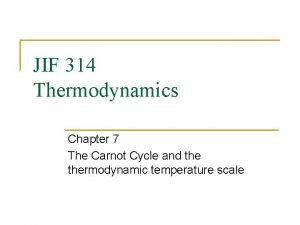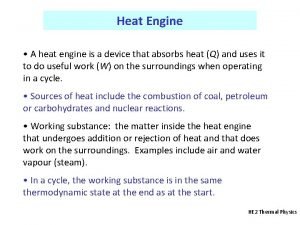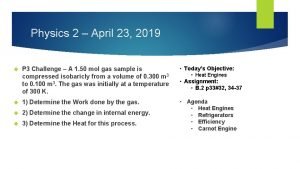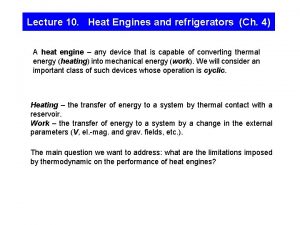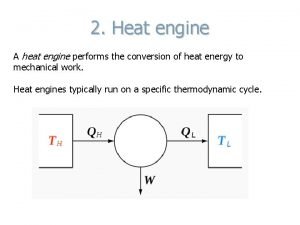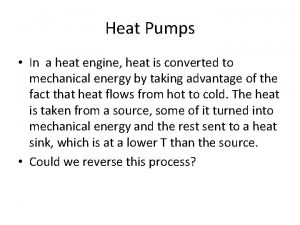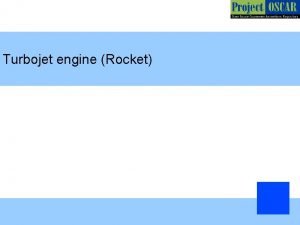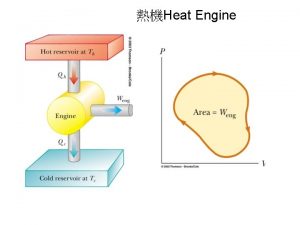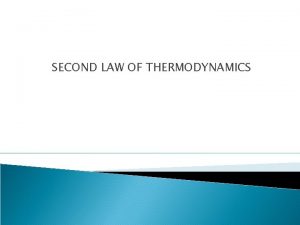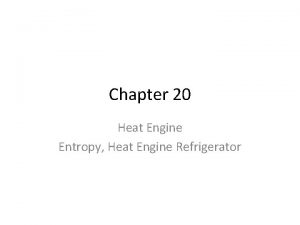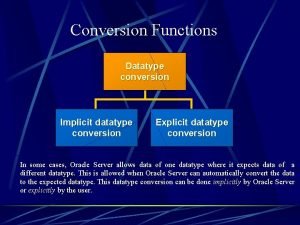Conversion of Heat to Work a heat engine







- Slides: 7

Conversion of Heat to Work (a heat engine) Heat reservoir at temperature T 2 > T 1 Q heat W work both in Joules Q 2 Heat Engine Q 1 Cold reservoir at temperature T 1 < T 2 W

Cooling via Work (Carnot Refrigerator) Environment at temperature Th > Tl Qh Refrigerator Ql Refrigerator, inside temperature Tl < Th

Carnot Heat Pump Environment (Home) Th > Tl Qh Heat Pump Ql Resevoir (ground) Tl < Th Always > 100%

The Clausius Inequality and the 2 nd Law P Divide any reversible cycle into a series of thin Carnot cycles, where the isotherms are infinitesimally short: v • We have proven that the quantity d. S = d. Qr/T is a state variable, since its integral around a closed loop is equal to zero, i. e. the integration of differential entropy, d. S, is path independent!

The Clausius Inequality and the 2 nd Law P Divide any reversible cycle into a series of thin Carnot cycles, where the isotherms are infinitesimally short: v For a reversible process! Leads to the definition of entropy for a reversible process:

The Clausius Inequality and the 2 nd Law P Divide any reversible cycle into a series of thin Carnot cycles, where the isotherms are infinitesimally short: v • There is one major caveat: the cycle must be reversible. In other words, the above assumes only configuration work (Pd. V) is performed. • If the cycle additionally includes dissipative work, it is not clear how to include this in the above diagram.

The Clausius Inequality
